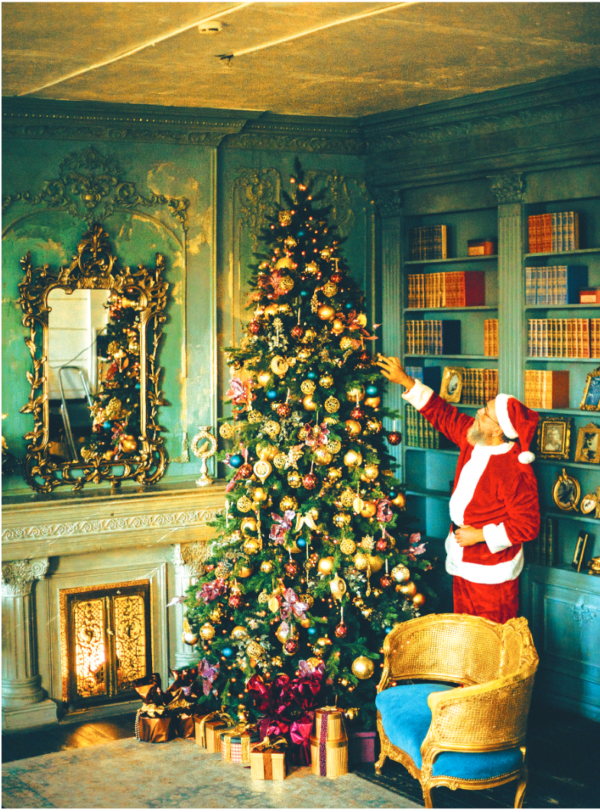
One of the nice things about Christmas is that it’s a time of year full of much-loved traditions. From carol singing to making an effort to put the average annual food production of a small country inside us, we indulge in these traditions and profess to enjoy doing so. Traditions bring us together by enabling us to participate in a sort of communal identity. They also are a link to the past; to what came before us and made us who we are. A good reason, then, to employ a healthy amount of distrust in our dealings with them.
Take cabbages, for example. Oh yes. I daresay most readers will have thought little, if at all, about the cabbage-related traditions in Dublin during the winter festival. And yet, if you delve into the annals of the folklore history collection at UCD (one of the more illustrious Dublin 4 Universities), the iron-loaded, staple leaf was foremost in the minds of teenagers in the late 1930s. Consider the sworn testimony of John Smyth, a 14-year-old resident of Lucan, talking in 1938. John reports that on New Year’s Eve it was the custom for a young, “marriageable” woman to walk out into the garden and pull a head of cabbage. I know. Gardening trends shift. But this was not merely an exercise in foraging for fodder. There was an element of divination at play, for the stringent leafy oracle contained not only useful nutrients, but a reliable indication of the stature of the harvester’s future betrothed.
I will let young Smyth explain the rules. He warns (and it does sound like a warning) that “Some people play this trick on New Year’s Eve. If a girl wants to know what kind her future husband will be, she must go out in the garden at twelve o’clock that night, and pull up a cabbage-head and bring it into the house. If it is a long one he will be long, if it is a short one he will be short and if it is crooked he will be crooked. Whatever shape the cabbage is, it is said the man will be the same.”
Leaving aside that young Smyth characterises the whole affair as “a trick”, which somewhat undermines our faith in his belief, this does seem like an unwieldy relationship counselling tool, even for the 1930s. For one thing, I have to doubt the impartiality of the subject in the act of selecting the cabbage, especially since the size and shape of the leafy prize are meant to correlate to the length and breadth of her future husband. Essentially, the problem with this as a data gathering method is that the person can see the shape of the cabbage, which is supposed to determine the shape of their future spouse, before they pull it out of the ground. Ok, I know you do it at midnight on New Year’s Eve, and that tends to be a dimly lit affair in rural cabbage patches, but I’m guessing the protagonist had a lot of daylight hours in the run-up to the pulling event to spy out a cabbage that looked like their desired future husband. That surely must skew the resulting data?
To counter my own sceptical bile, I will defend the cabbage tradition on the grounds that it is actually meant to do something. This puts it in a loftier realm than, say, the “tradition” of putting on a garish piece of LED-ridden knitwear and staggering through the twelve pubs of Christmas trying to annoy as many of the regular patrons of the hostelries involved as is possible.
So, there’s traditions, and there’s traditions. I have a friend for whom the repeating of almost any random action more than once (the touching of a gatepost or the buying of a specific newspaper on a Tuesday for example) may legitimately be considered a tradition. And they have a point. I imagine we all have family traditions that fit that description. We always go to Aunt Ethel’s and have currants. Or we must put the gravy in the cracked jug before half past one. But really? Must we really? Why don’t we just ask Ethel to come round to our house the Tuesday before Christmas, because it’s more convenient? And just drop the current thing. It’s silly and no one can remember why we have them and in truth most of us don’t really like them anyway. Similarly, why don’t we give the whole Christmas tree thing a wide berth? The real ones make a hames of the carpet and are attacked viciously by the cat every year, while the fake ones have a lifetime of centuries and somewhere down the line end up distributed in microbeads in the ocean slowly killing off the humpback whales.
I suppose the answer is that traditions, even old ones begun long before we were born, are just part of having a shared human experience. And even someone grinching about them like me would miss them if they were gone. Think of the energy I save by having a handy seasonal list of things to give out about. If the carol singers didn’t come to my door I’d have to go out and look for something to sufficiently stimulate the grinch gland (a small organ situated just behind the front near the tut-tutting centre in the brain).
So stick on your horrendous jumper, hang up the mistletoe and trot out to the cabbage patch and enjoy it. Just as I will enjoy thinking I’m better than that as I flick through the channels full of Willy Wonka and Die Hard (yes, it is a Christmas film) moaning about the lack of imagination of the schedulers. It may seem like a pointless exercise to others, but I do it every year and I sort of enjoy it.
And, of course, it’s traditional.



